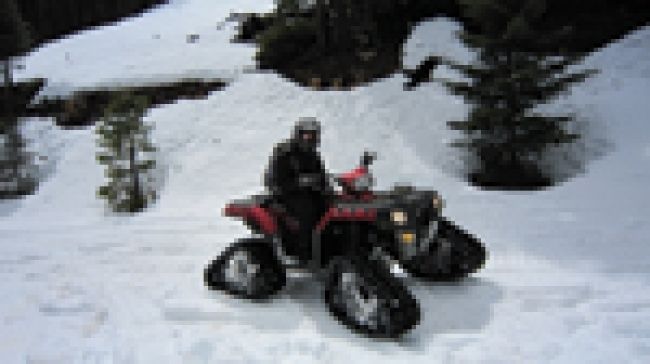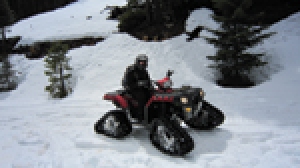
ATV Safety Begins with Proper Training

All-terrain vehicles, also known as ATVs, have a long-standing reputation for being unsafe and dangerous for riders and passengers. Operational injury statistics are staggering, averaging well over a half-million injuries in the U.S. since 2004. Although many injuries are linked to recreational use, ATVs in the workplace are expanding in a variety of industries, thus increasing the risk of job-related injury.
Many theories exist about what can be done to reduce or eliminate ATV-related injuries, but one thing is certain: Proper training to avoid hazards, execution of preventive maintenance and good work practices while operating an ATV will produce positive results and save lives.
Whether you are hiring a third-party safety training company or developing your own internal course content, your employees deserve more than a half-day rider safety course often provided by the vehicle manufacturer. Rider safety courses are designed to be machine tutorials for recreational users who, in many cases, have never even started the vehicle.
Need to Know
Employees who operate ATVs need to have a well-documented operational plan that includes mechanical orientation with manufacturer limitations, riding theory, required personal protective equipment, how to perform vehicle inspections, trailering, safe loading practices, and basic riding techniques, including accelerating, braking and turning drills. However, these are just the basic essentials for true safety training. Employees that ride ATVs regularly in remote locations need to be taught how to survive if stranded or injured.
A thorough training program must first define the hazards that exist and how to take necessary precautions to prevent them from occurring. Owner’s manuals and warning labels on the ATV explain some hazards associated with operating the machine, but is this really enough? The answer is no, and most often riders mount the machine and go without even reading these labels. Let’s take a look at a few of the hazards associated with operating an ATV:
1. Handling: Up until a few years ago, most ATVs had a solid rear axle, not a limited slip differential-type rear end. This caused both drive wheels to turn at the same time, which was fine until you had to turn, causing the potential for loss of control. When you make a turn, the inside drive wheel needs to spin slower in order mitigate this potential. Manufacturers have recently released “on the fly” type locking differentials to use when you need all drive wheels turning. Creating a training program that allows for all ATV types that exist under your corporate umbrella is essential to the safety of your employees as machine operation is varied.
2. Excessive Speed: ATVs are designed strictly for low-speed, off-road use. They conquer obstacles, climb and descend hills and take you to remote locations. It is a mystery as to why manufacturers are producing machines that will go upward of 75 mph. However, it strengthens the case for training ATV operators on proper regulation of speed and expanding rider knowledge on operating in varied terrain.
3. Storage Racks: Most modern utility-style ATVs come with front and rear oversized racks, which are approximately the width of the machine. One of the leading causes for ATV accidents and deaths is rollovers. Riders need to understand the consequences of strapping excessive weight above the center of gravity on the machine and how to adjust their riding technique. Most ATVs are equipped with a trailer hitch to tow cargo, offering a safer alternative.
4. Insufficient Warning Labels: Modern warning labels on machines include age requirements, the prohibition of drugs and alcohol, proper riding gear and sometimes guidelines for off-road use only. However, there are no warning labels about hill climbing, descending and side hilling, yet these are dangerous riding situations requiring advanced skills. Proper training is the only way to ensure that riders are aware of the obstacles they may face.
These are a few hazards associated with operating an ATV, and a few things for all employers to think about. OSHA 08-03-2006 states: “As ATV use increases in the workplace, employers and employees can reduce the risk of injury by modifying work practices, operating ATVs within manufacturer’s limitations, wearing helmets, and obtaining vehicle-specific training.” Most incidents you find with work-related injury or death involving an ATV can be linked to inadequate training, and the majority of employees riding ATVs for their job have not received formal outside training.
As an employer, remember, safety is no accident.
About the Author: Todd Horning is an ATV Instructor at SafetyOne International, Inc., a leading provider of vehicle, climbing, rescue and fall protection safety training for utilities, government and corporations worldwide. He has more than 10 years of professional experience teaching the safe operation of motorcycles, ATVs and tracked snow vehicles. For information about SafetyOne, visit www.safetyoneinc.com.

